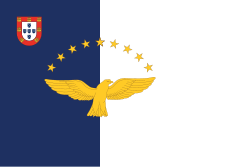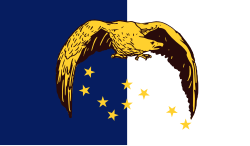| Flag | Date | Use | Description |
|---|
 | 16th century | General use | Square white field charged with the Cross of Christ |
 | 1616–1640 | Used at sea during the Iberian Union, flown in the stern section of the ship | Rectangular white field charged with the arms of Portugal on branches, off-set to the mast side. |
 | 1640–1667 | Used at sea, flown in the stern section of the ship. | Rectangular white field charged with the arms of Portugal, off-set to the mast side. |
 | 17th century | Portuguese India-based fleets, flown in the stern section. | Backside of the royal flag. Rectangular white flag with Our Lady off-set to the mast side. |
 | 17th–18th century | Commander of Portuguese-Brasil-based warships | Rectangular green and white striped field charged with the coat of arms of Portugal. |
 | –1670 | Commander of Portuguese-India-based warships, flown in the stern section | Rectangular white field charged with the royal coat of arms of Portugal set on a Cross of Christ, off-set to the mast side. |
 | 1600 | War ensign | |
 | 1706–1750 | Royal navy flag flown in the stern section. | Rectangular white field charged with the arms of Portugal, off-set to the mast side. |
| 1826–1830 |
 | 1816–1826 | Rectangular white field charged with the arms of the United Kingdom of Portugal, Brazil and Algarves off-set to the mast side. |
 | 1834–1910 | Variant of the national flag for use at sea (ensign) | Vertical bicolour blue-white. Proportion of the fields: 1:2. |
 | 1833–1910 | Royal navy jack, flown in the bow section | Square white banner charged with the royal coat of arms of Portugal, a blue bordure. |
 | 1828–1910 | Personal royal jack used at sea in the bow section | Square white banner charged with the royal coat of arms of Portugal, a red bordure. |
 | 1707–1910 | Personal royal banner used at sea in the stern section | Rectangular red field charged with the royal arms of Portugal off-set to the mast side. |
|






















































































































































